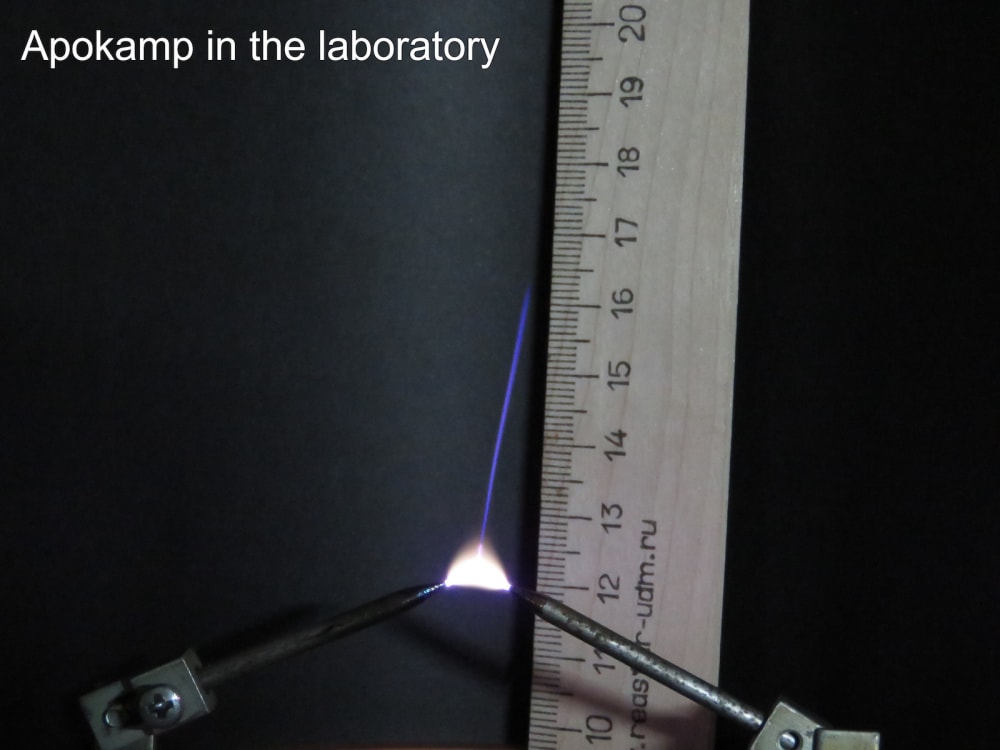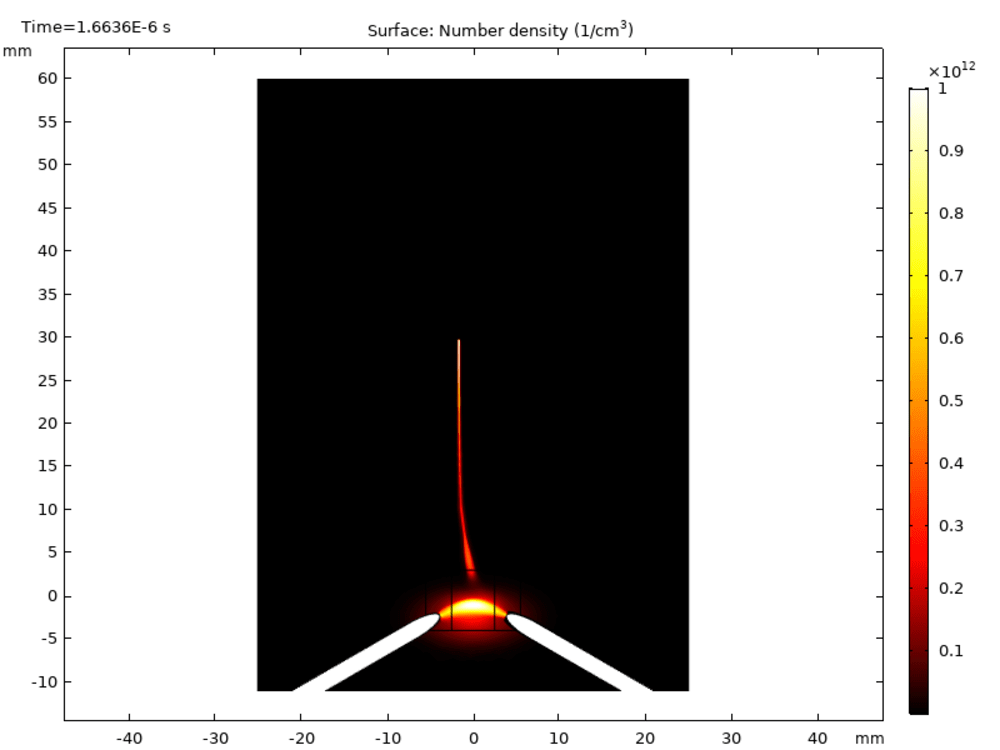Non-thermal atmospheric-pressure plasma jets (APPJ) have an important technical significance: they unite a number of unique properties, including low temperature of a jet medium, existence of highly reactive chemical species, easily controlled plasma dynamics. These properties makes APPJ highly suitable for various important industrial and biomedical applications. As plasma inside APPJ is generated by the gas discharge, the main practical importance of APPJ is connected to their capability to provide plasma that is not spatially bounded or confined inside the near-to-electrodes area. Classical APPJs are initiated by the insufflation of a discharge gap with laminar (or turbulent) gas flows. Namely, this blowing greatly limits the biomedical application of APPJs due to the damaging effect of the gas stream on laboratory biological materials.
In 2016 the group of experimentalists from the Institute of High Current Electronics (Tomsk, Russian Federation) discovered a novel phenomenon related to APPJs that was called an “apokamp” (originated from Greek words “off the bend”). This new APPJ represents a plasma jet developing perpendicular to the bending point of a pulsed-periodic discharge channel initiated between two pin electrodes. The resulting jet is found to be a thin conical plasma structure with a length of 6-8 cm propagating upwards from the initiating discharge channel. One of the most important characteristic features of apokamp – it is not associated with any kind of natural convection or artificially induced gas flows.
You can find more details on scientific background (experimental & theoretical) in our following papers:
• Sosnin, E.A. et al., 2016. // JETP Letters, 103(12), pp.761–764. http://dx.doi.org/10.1134/s0021364016120146
• Sosnin, E.A. et al., 2017. // EPJ D, 71(2). http://dx.doi.org/10.1140/epjd/e2016-70466-0
• Sosnin, E.A. et al., 2018. // Physics of Plasmas, 25(8), p.083513. http://dx.doi.org/10.1063/1.5038099
• Kozhevnikov, V. et al., 2020. // EPL (Europhysics Letters), 129(1), p.15002. http://dx.doi.org/10.1209/0295-5075/129/15002
• Sosnin, E.A. et al., 2020. // Physics-Uspekhi. http://dx.doi.org/10.3367/ufne.2020.03.038735
In atmospheric air, the apokamp is a unique tool that allows influencing various biological objects with a controlled plasma jet, in which core the active chemical components density is much higher than in classic gas flow APPJs. Noteworthy that apokamp doesn’t require any additional (expensive) gases, e.g. helium. It efficiently delivers reactive oxygen and nitrogen species (RONS) to any biological targets without destroying the delicate cell material with an intensive gas stream, since the latter is simply absent according to the basic principles of apokamp. The RONS list is quite comprehensive, it includes: ozone, hydroxyl radicals, different nitrogen oxides, hydrogen peroxide, nitric and nitrous acids. Depending on the controlled apokamp parameters, effects can range from cell detachment and migration to cell proliferation up to the programmed cell death (apoptosis). In fact, this means that we can attempt using the advanced apokamp plasma chemistry for accelerating plant seed germination, disinfection, wound healing, cancer treatment, non-thermal coagulation, etc. In all of these biomedical applications, the design of an apokamp APPJ device is extremely simple, easily scalable, and cheap to serial production. It resembles the experimental setup illustrated in accompanying illustrations.
Video
Like this entry?
-
About the Entrant
- Name:Vasily Kozhevnikov
- Type of entry:teamTeam members:Andrey Kozyrev (Institute of High Current Electronics)
Aleksei Sitnikov (Institute of High Current Electronics)
Aleksandr Kokovin (Institute of High Current Electronics)
Natalia Semeniuk (Institute of High Current Electronics)
Victor Skakun (Institute of High Current Electronics)
Dmitrii Pechenitsin (Institute of High Current Electronics)
Victor Panarin (Institute of High Current Electronics)
Eduard Sosnin (Institute of High Current Electronics)
Victor Tarasenko (Institute of High Current Electronics)
Vasily Kozhevnikov (Institute of High Current Electronics) - Software used for this entry:COMSOL Multiphysics
- Patent status:none








